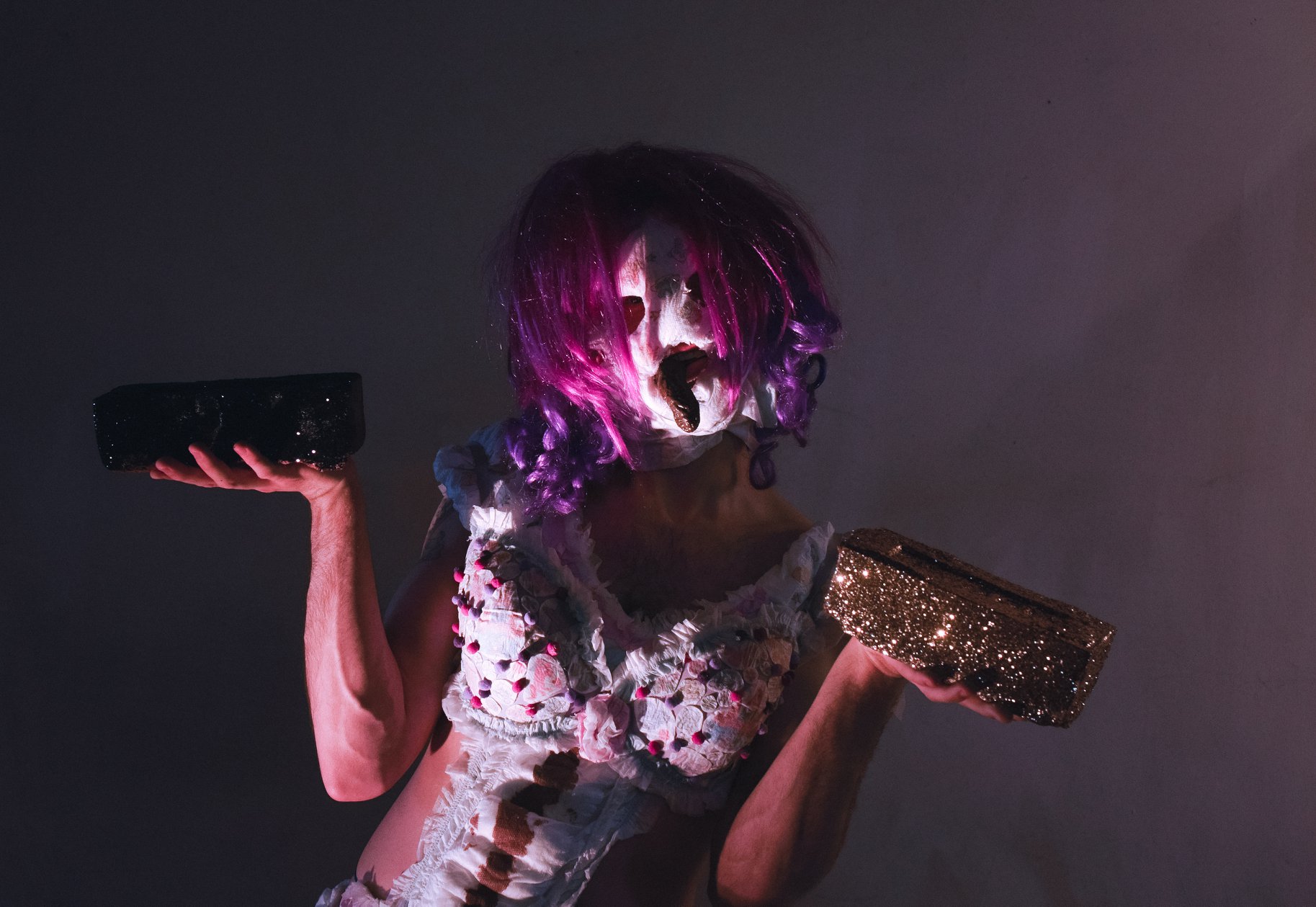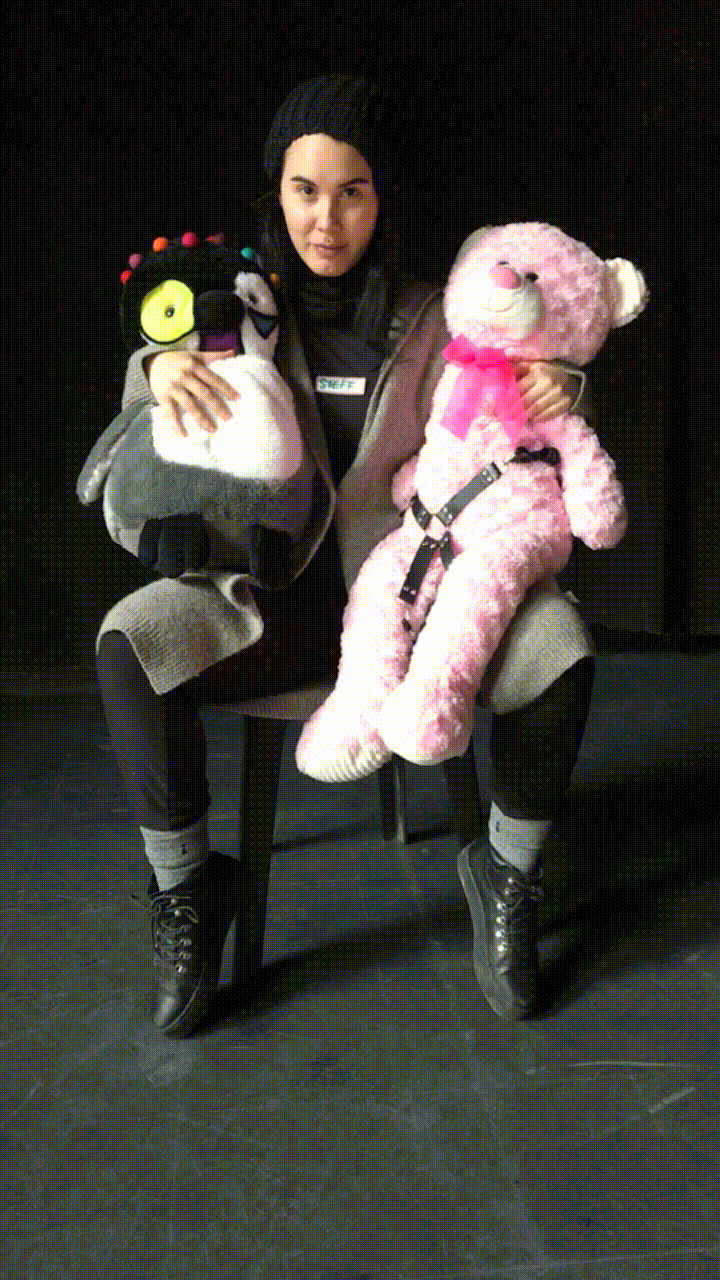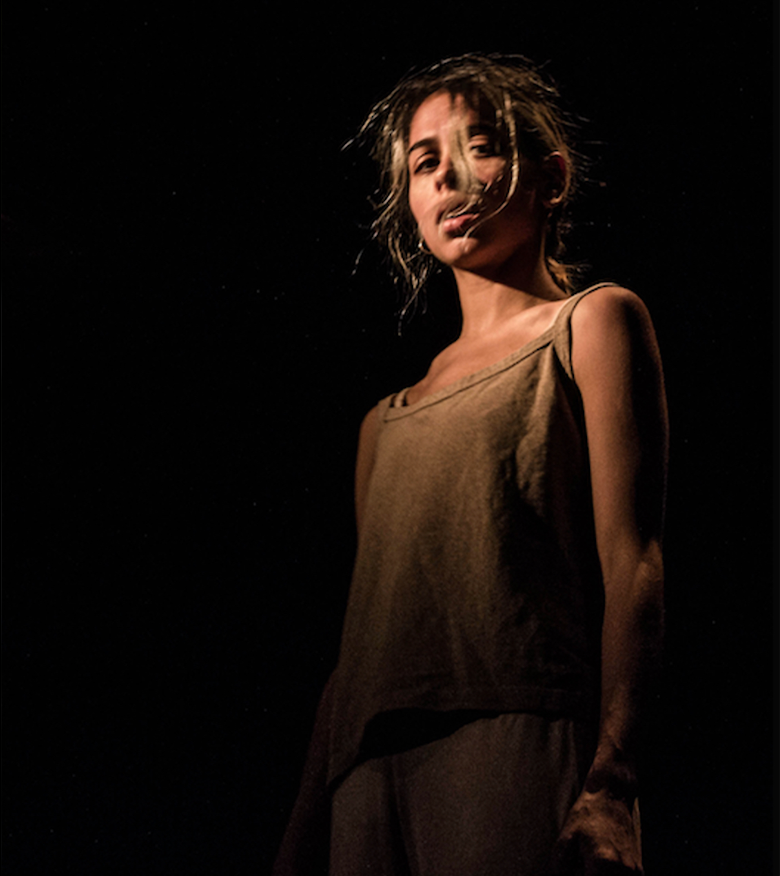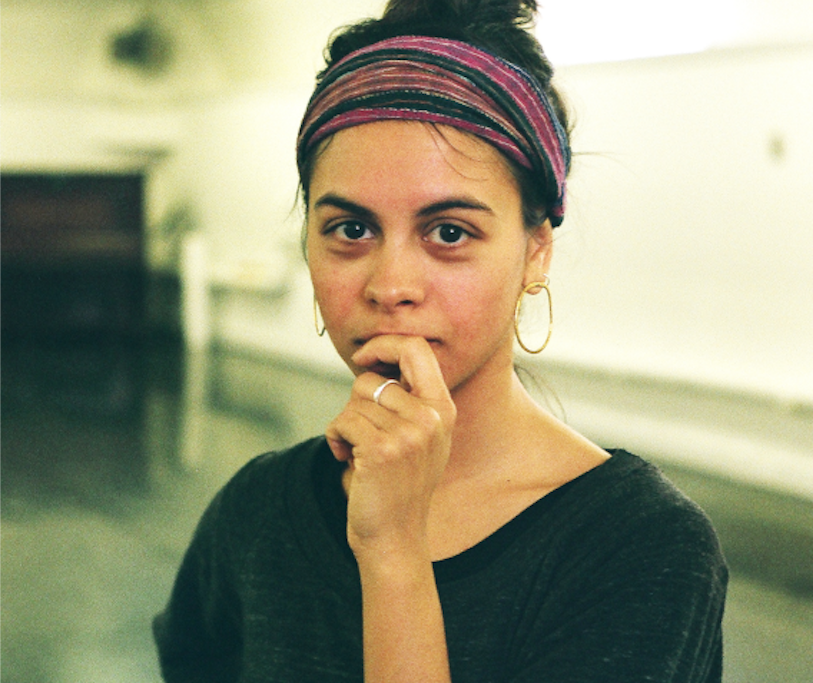On a snowy January afternoon, a small group of Rhubarb artists met in the Buddies cabaret. Working in pairs, they interviewed each other on a range of topics from their artistic practices, to their obsessions and rituals. There were some moments with plush animals too. This is part IV of that day, featuring Steff Juniper and Nyda Kwasowsky.
Read-on…
STEFF JUNIPER IS A SOUND ARTIST AND MAD/DISABILITY JUSTICE WORKER
They perform in Art Party on feb 21 at 10 PM: A queer-art-party-performance cabaret celebrating madness, sex, intimacy, and the grotesque through sound-art, dance and performance.

What feels urgent to you?
Urgency is not something I can relate to because I am currently embracing what my body needs in order to do anything, let alone focus on artistic process and creation, I work from a framework of radical slowness and “Crip Time”. As someone who lives with madness and disability, particularly C-PTSD, it is important for me to not work under pressure because that is what makes me unravel, and shut down. Most of my relationships and community thrive off of my ability to participate in mutual aid as foundational to our collective struggle to survive, and flourish, by our aims to equitably be taking care of each other. I believe that community organizing and movement building would benefit from slowing down and setting its own pace, rather than mimicking the exploitative culture of capitalism. I have had lots of experience working in spaces where expressing radical views is proven by a kind of ‘vanguardism’ ie. Standing on two feet and yelling into a microphone — I am tired of it, and from it. There are many ways to participate in movement building, which are all equally valid, and the work of artists has always been central to political consciousness-raising and meaning-making. So, what I am saying is that it is urgent to ditch ‘urgency’ and to slow down to our own pace, as marginalized folks working to create access intimacy, and reduce participation barriers in art, advocacy and activism.
If the work of Mad, Deaf, Neurodiverse and Disabled, etc. especially QTBIPOC folks is not valued or included, if these individuals aren’t able to be in the room because of barriers imposed by the organizational structure, such as lack of accessibility in its all encompassing form: spanning from transportation needs, to affordability, to physical barrier-free access, to American Sign Language Interpreters assisting with inclusion of Deaf culture, to participation protocols to structure what ‘safety’ means in the spaces you are working within, etc. and if these individuals being unable to be in the room therefore means they cannot be in positions of power, your movement is not radical, and your art is lacking!
(This is something I would like white, cis, non-Disabled people to actively listen and attune themselves to because they ever so often are the ones who get to set the pace.)
Was there a defining moment in your practice where things shifted for you?
I’ve been hesitant to consider myself an artist for a long time because most of my work is conceptual and has existed solely in my imagination or in my bedroom where I perform to an audience of … well, furniture, spirits and/or my feline friends. It is only in the last year that I have had the opportunity to collaborate with and perform in front of ‘human’ animals. I have challenged myself to identify my art making process as being less about who is in the audience to outwardly validate what I am creating, and to focus more on how it feels for me to be creating and who I want my audience to be/who and what is my art for… I have figured out the answer to that question and it most certainly includes my feline friends.
I want my art to resonate with people who have experienced oppression at the hands of carceral spaces, such as the medical system, and I want my art to channel imagining a world where appreciation is given to everything living, not just what ‘dominant culture’ aka colonial thinking, considers to be possessing ‘personhood’, which designates status of ‘alien’ to those who do not have citizenship, also non-human animals, spirits and other-worldly beings.
What are you obsessed with right now?
My special interests right now are eating vegan gummy candies, while learning about the cruel history of bat research and present conservation efforts juxtaposed by consuming media about ‘aliens’ or extraterrestrial species invading, abducting, or just existing, and considering the socio-political nature of how these sci-fi alien tropes are representative most often of Western cultural FEAR, like loneliness, alienation, lack of belonging, lack of parenting, and threats to nationhood or border security, among others.

Recently, at our Rhubarb Festival artist interviews I got to learn about Indigenous stories and interpretations of aliens as invoking a sense of wonder and positivity, by virtue of them seen as living beings, rather than political threats. Thank you so much to Smith Purdy, writer of Pouin for having this lovely and provocative conversation with me.
NYDA KWASOWSKY IS A DANCE ARTIST AND CHOREOGRAPHER
Nyda performs in ritual [moment]um — where dance is combined with music to explore and unravel the legacies she and collaborator Rajna Swaminathan have inherited— deciding what to hold onto, and when to let go in order to heal.

Was there a defining moment in your practice where things shifted for you?
I left the traditional dance environment initially because my needs weren’t being met. I chose to be isolated for almost four years, in need of uninterrupted space to develop my sense of self, identity and relationship to the moving body. It was in these years, I understood what spaces supported me, where I felt I could explore safely and what was important. My practice naturally shifted as I understood my needs. But it wasn’t until I opened to collaborators that I recognized myself, my desires and purpose. As if collaborators were a reflection and affirmation of my process and development.

Do you have any personal rituals or processes of self-care that you engage in order to make publicly sharing your work more possible?
My daily practice feels like ritual, as it moves the energetic bodies to arrive at new possibilities. It feels as though I am able to clean and clear space. This is grounding and offers a sense of home within to support my interactions in practice and performance. I also need to immerse myself in the elements of nature, whether that means travelling to a body of water etc. It’s the stillness that allows myself to connect, locate strength, to be available for vulnerability in performance.
What feels urgent to you?
This idea of the individual in the collective feels incredibly urgent in my practice but even more so in changing the social political landscape. How can we value the individual experience in conversation with the intersections of the collective? Priority towards individuals growth, connection to self, desires, needs and in tandem learn from those around us. How do we hold space for everyone, while at the same time taking care of ourselves?

